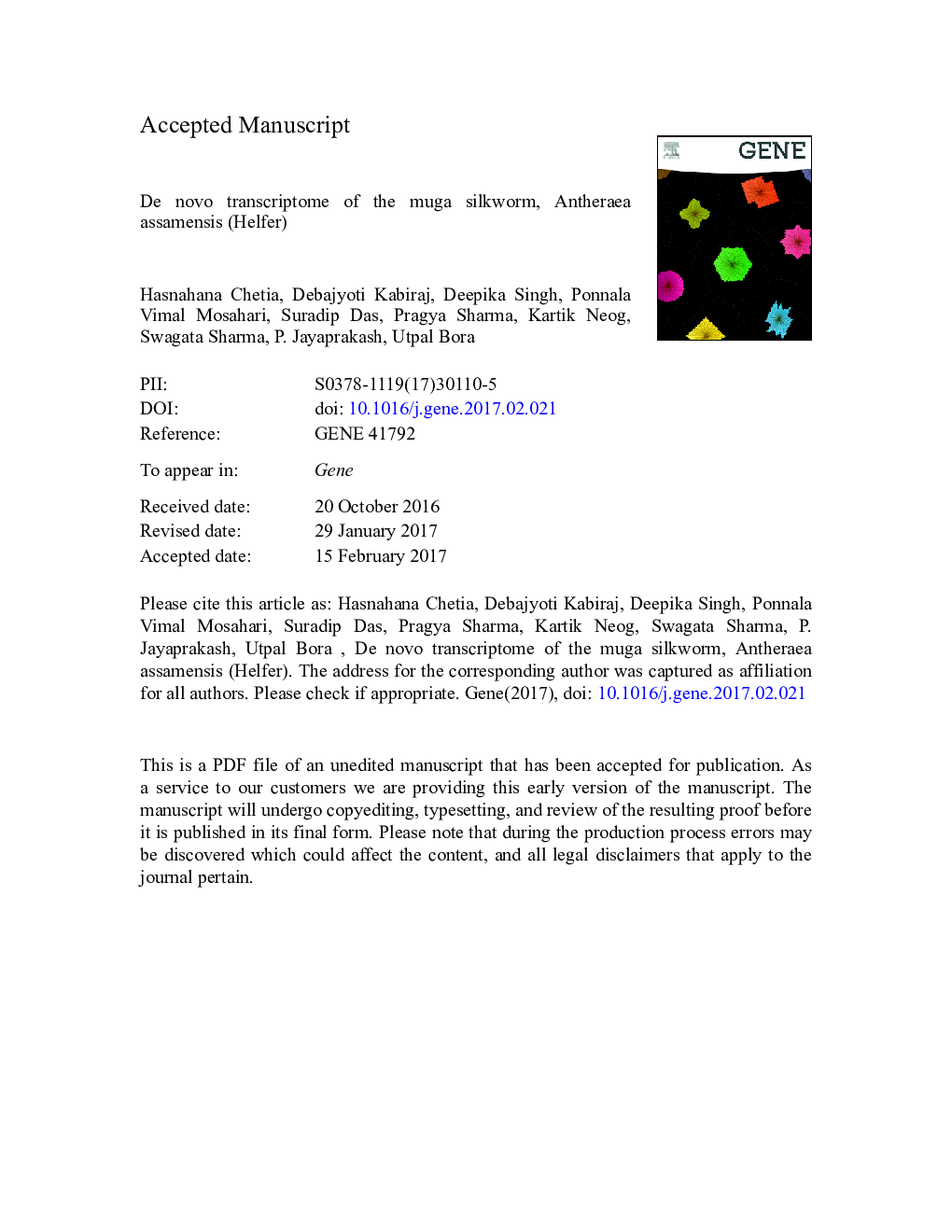| Article ID | Journal | Published Year | Pages | File Type |
|---|---|---|---|---|
| 5589719 | Gene | 2017 | 42 Pages |
Abstract
Antheraea assamensis (Lepidoptera: Saturniidae), is a semi-domesticated silkworm known to be endemic to Assam and the adjoining hilly areas of Northeast India. It is the only producer of a unique, commercially important variety of golden silk called “muga silk”. Herein, we report the de novo transcriptome of A. assamensis reared on Machilus bombycina leaves for the first time. Short reads generated by high throughput sequencing of cDNA libraries from multiple tissues, viz. alimentary canal, silk gland and residual body of the 5th instar of muga silkworm were assembled into transcripts via a de novo assembly pipeline followed by functional annotation and classification. A total of 1,21,433 transcripts were generated from ~Â 231 million raw reads of which ~Â 74% (89,583) were either allocated a functional annotation or categorized under Pfam/COG/KEGG categories. Identification of differentially expressed transcripts and their comparative sequence analysis revealed candidate genes related to silk synthesis, viz. silk gland factor-1 and 3, sericin-like transcript, etc. with conserved forkhead, homeo- and POU domains. Several candidate anti-microbial peptides which may have potential anti-bacterial, anti-fungal or anti-parasitic activity in A. assamensis were also identified. T/A and AT/TA were predicted to be the most abundant mono- and di-nucleotide simple sequence repeat markers in the transcriptome. Transcriptome validation was carried out by quantitative real-time PCR (qPCR) amplification of eight transcripts. The resources generated by this study will expand the periphery of existing genomic data on A. assamensis facilitating future in-depth studies on its unknown aspects.
Keywords
residual bodyqPCRCegSSRAMPCoGSaturniidaeShort Read ArchiveMISAPOUESTNext generation sequencingExpressed Sequence TagSraKEGG یا Kyoto Encyclopedia of Genes and Genomes Kyoto Encyclopaedia of Genes and GenomesSimple sequence repeatsquantitative real time PCRSericinSilk glandGene ontologyLepidopteraAnti-microbial peptidesAntimicrobial peptideAlimentary canal
Related Topics
Life Sciences
Biochemistry, Genetics and Molecular Biology
Genetics
Authors
Hasnahana Chetia, Debajyoti Kabiraj, Deepika Singh, Ponnala Vimal Mosahari, Suradip Das, Pragya Sharma, Kartik Neog, Swagata Sharma, P. Jayaprakash, Utpal Bora,
